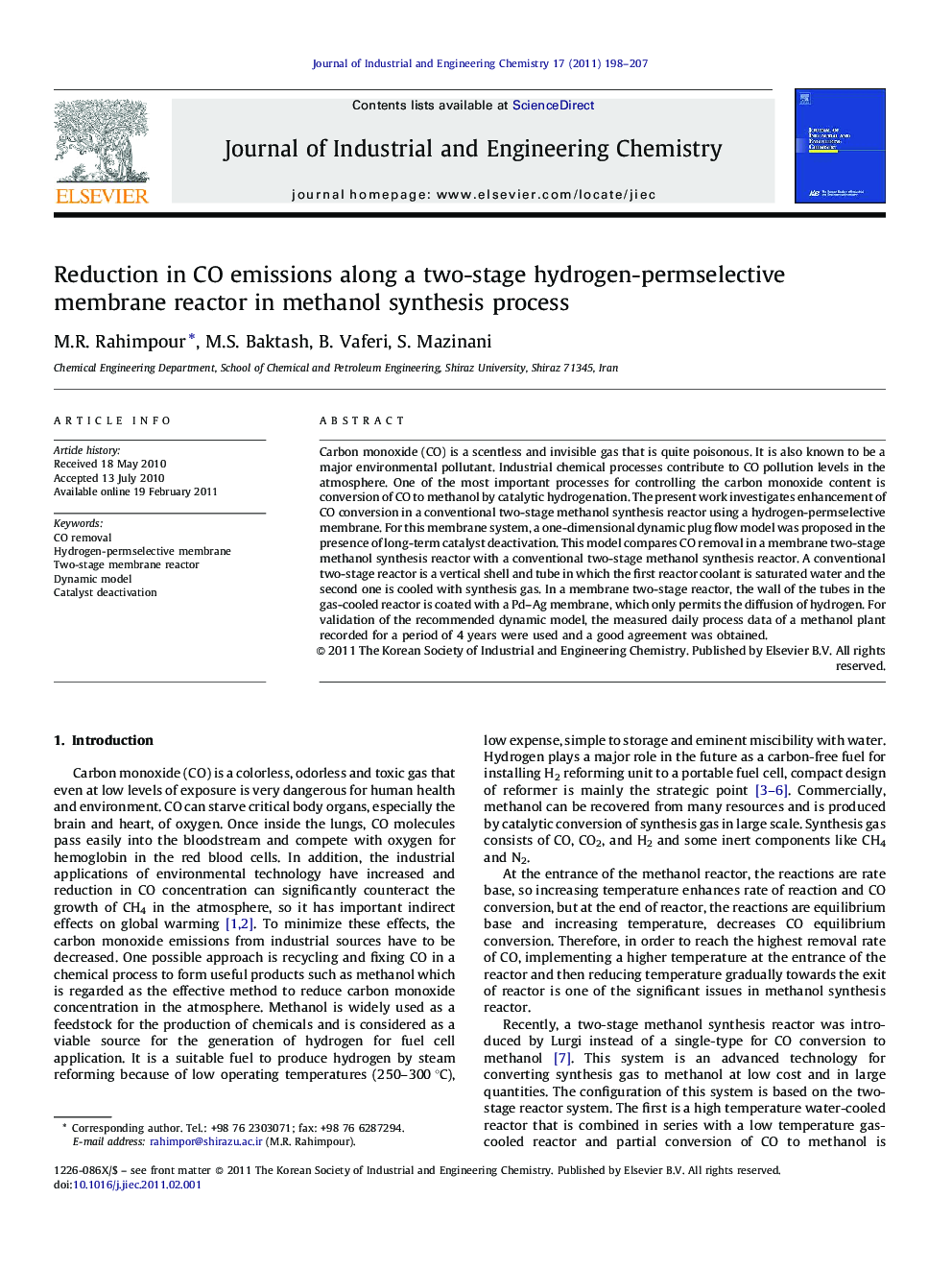| Article ID | Journal | Published Year | Pages | File Type |
|---|---|---|---|---|
| 228622 | Journal of Industrial and Engineering Chemistry | 2011 | 10 Pages |
Carbon monoxide (CO) is a scentless and invisible gas that is quite poisonous. It is also known to be a major environmental pollutant. Industrial chemical processes contribute to CO pollution levels in the atmosphere. One of the most important processes for controlling the carbon monoxide content is conversion of CO to methanol by catalytic hydrogenation. The present work investigates enhancement of CO conversion in a conventional two-stage methanol synthesis reactor using a hydrogen-permselective membrane. For this membrane system, a one-dimensional dynamic plug flow model was proposed in the presence of long-term catalyst deactivation. This model compares CO removal in a membrane two-stage methanol synthesis reactor with a conventional two-stage methanol synthesis reactor. A conventional two-stage reactor is a vertical shell and tube in which the first reactor coolant is saturated water and the second one is cooled with synthesis gas. In a membrane two-stage reactor, the wall of the tubes in the gas-cooled reactor is coated with a Pd–Ag membrane, which only permits the diffusion of hydrogen. For validation of the recommended dynamic model, the measured daily process data of a methanol plant recorded for a period of 4 years were used and a good agreement was obtained.
